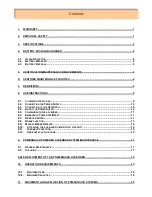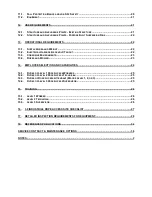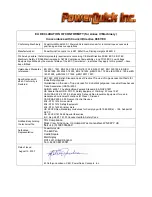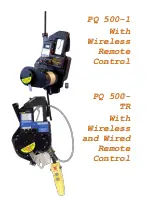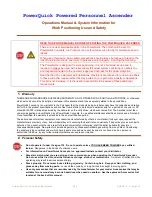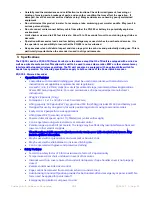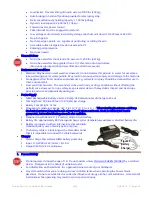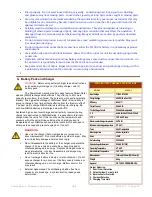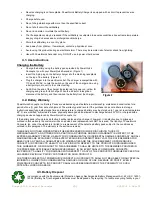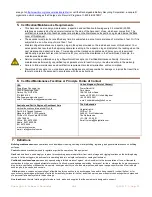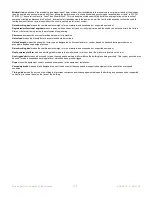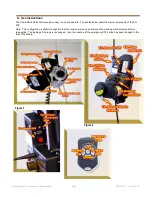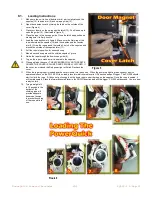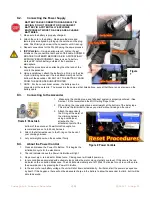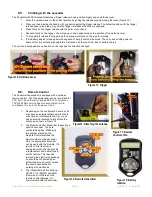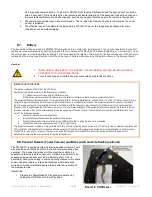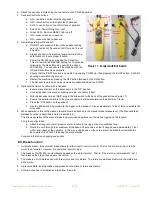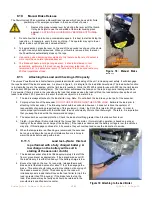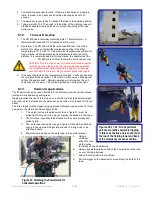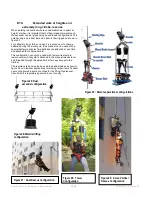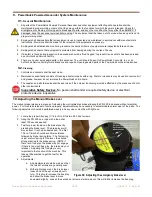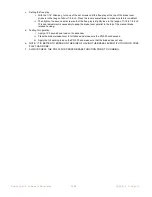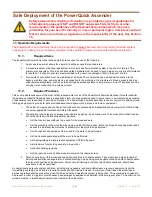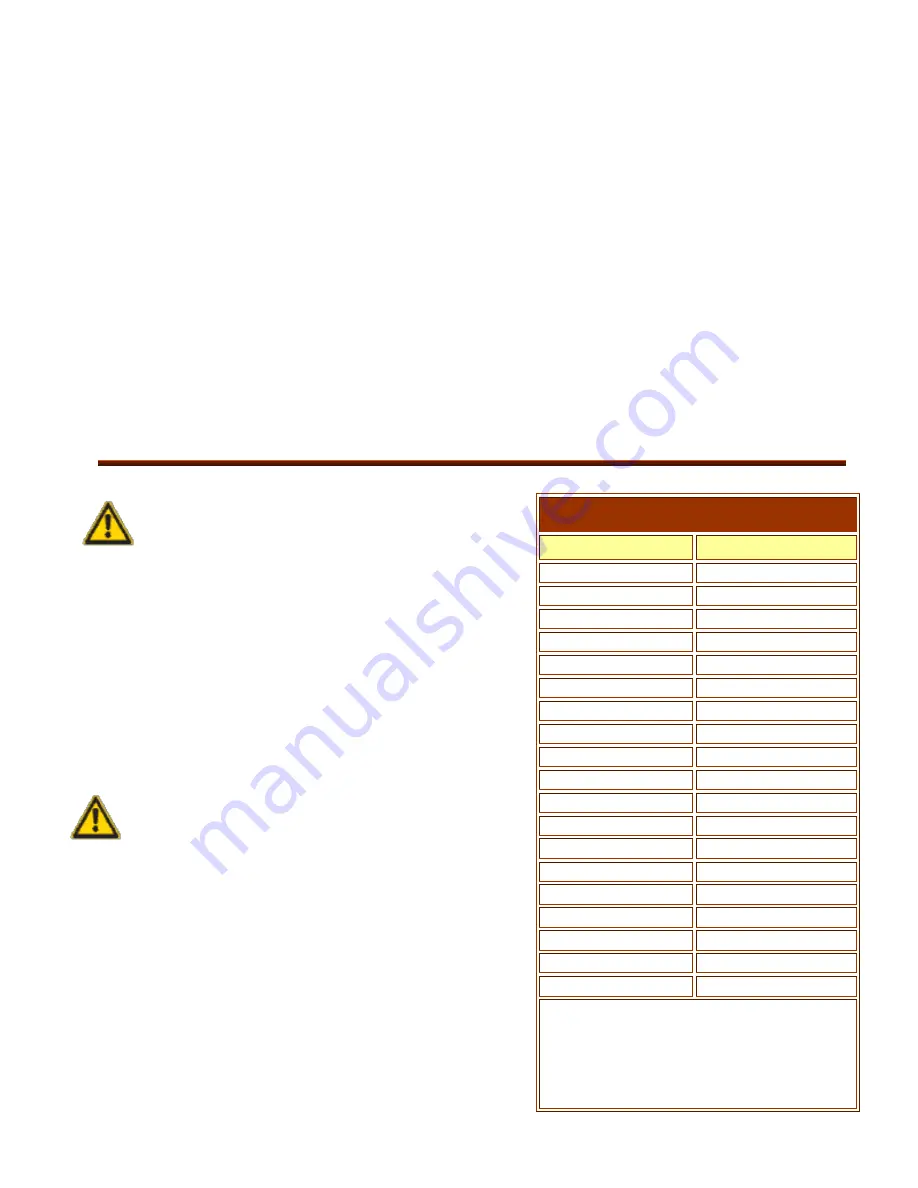
PowerQuick Powered Ascender
(4)
PQ500-1 1-Sep-15
Dress properly. Do not wear loose clothing or jewelry. Contain long hair. Keep your hair, clothing,
and gloves away from moving parts. Loose clothes, jewelry, or long hair can be caught in moving parts.
Use only accessories that are recommended by the manufacturer for your model. Accessories that may
be suitable for one model may become hazardous when used on another. See your distributor for the
approved Accessories List
Carefully read the maintenance and certification instructions. Check for misalignment, loosening or
binding of moving parts, breakage of parts, and any other condition that may effect the operation. If
damaged, have the ascender serviced before using. Many accidents are caused by poorly maintained
equipment.
Do not immerse this product in water, for example, a lake, swimming pool or water puddle. May result
in serious personal injury.
Do not connect or disconnect battery cable from either the PQ 500 or battery in a potentially explosive
environment.
Limit climb or descend to 200 foot intervals. Allow 15 to 30 seconds for unit to cool during long climbs
or descents.
Operation with excessive loads and low battery voltage may cause clutches to overheat and smoke. It is
the operator’s responsibility to insure that the PQ 500 is not overloaded.
Keep ascender clean of debris. Inspect and clean rope prior to each use and periodically during use. This
is particularly important when the ascender is used in dirty environments.
4.
Battery Pack and Charger
WARNING:
Before using battery charger read all instructions
and cautionary markings on (1) battery charger, and (2)
battery pack.
The PowerQuick Ascender battery pack features Nickel-Metal
Hydride (NiMH) rechargeable batteries. They offer up to 40% more
capacity (per volume) than Nicad. They are also more environmentally
friendly. The biggest advantage of NiMH over Nicad is their ability to
accept a charge at any time without suffering from the "memory effect".
The best way to charge NiMH batteries is with regular charging. Do
not allow NiMH batteries to discharge below 25 VDC.
Sustained high-current overcharge and cell polarity reversal (during
charge) are destructive to NiMH batteries. It is essential to terminate
charge when the cell is full. If this is not done, the temperature and
pressure within the cell will rise quickly as the charging current is
dissipated as heat. NiMH cells have internal vents, which will open to
allow gas to escape and prevent explosion of the cell.
Cautions-
Use only the charger that accompanies your product or a
direct replacement. Do not substitute any other charger. May
result in battery damage and/or serious injury.
Do not disassemble the battery or the charger or operate the
charger if it has received a sharp blow, been dropped or
otherwise damaged in any way. Replace damaged cords or
plugs immediately. Incorrect reassembly or damage may
result in electric shock or fire.
Do not recharge battery in damp or wet environment. Do not
expose charger to rain or snow. If battery case is cracked or
otherwise damaged, do not recharge. Battery short or fire
may result.
External Appearance-The cell/battery shall be free from
cracks, scars, breakage, rust, discoloration, leakage and
deformation.
NI-MH BATTERY CHARGER SPECIFICATIONS
MODEL
8208N3
Input Voltage
115VAC - 230VAC
Output Voltage
44VDC (30 cells x 1.2V )
Efficiency
Min. 81%
Output Current
2.6A ± 0.1A
Trickle Charge Current
500 - 600mA - adjustable
-?V
6mV ± 2mV/cell , 120mV – 240mV
?T/?t
1.0ºC ± 0.3ºC /min
Maximum start charge temperature 45ºC ± 5%
Minimum start charge temperature
0ºC ± 5%
Tmax
48 ± 5% - adjustable
Max charge time
6hours - adjustable
Vmax
>52.5V
No load voltage
59.5V ± 0.5V
Under voltage trickle current
0.5A ± 0.1A(?26V)
Operating Temperature
0ºC - 40ºC
Store Ambient Temperature
-10ºC - 70ºC
Measurement
140mm(L) ×90 mm(W) ×50 mm(H)
Weight
0.8kg
Approval
CE, TUV, UL, PSE, EMI, CB, CSA
Output Detection:
1. Short Circuit Detection
2. Output Voltage/ Current Limit
3. Reverse Power Protected
4. Overheat Detection
5. Charging Time Limit
Summary of Contents for PQ 500-1
Page 46: ......
Page 48: ...NOTES...

